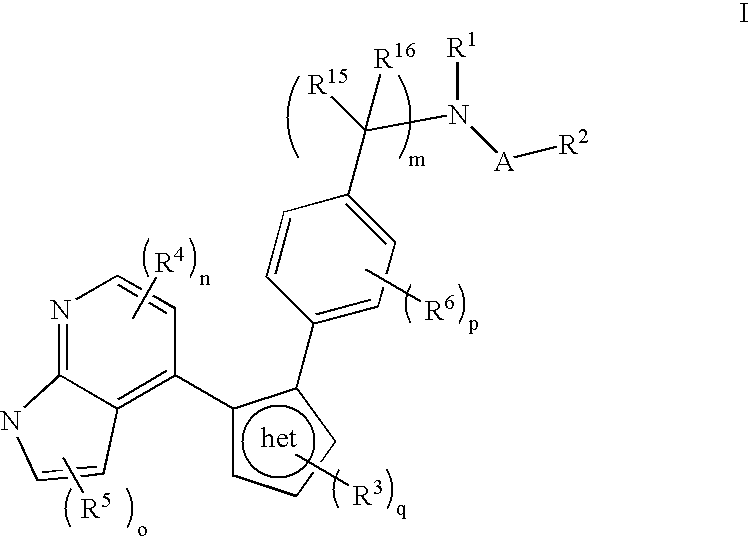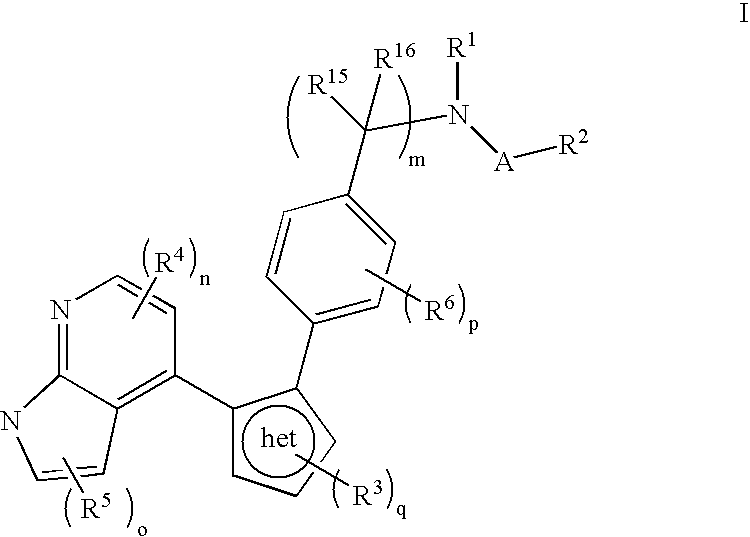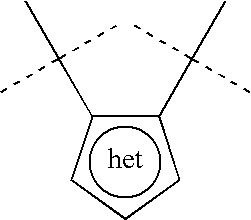Azaindole inhibitors of aurora kinases
- Summary
- Abstract
- Description
- Claims
- Application Information
AI Technical Summary
Benefits of technology
Problems solved by technology
Method used
Image
Examples
example 1
Preparation of N-{4-[1-ethyl-4-(1H-pyrrolo[2,3-b]pyridin-4-yl)-1H-pyrazol-3-yl]phenyl}-N′-phenylurea
A solution of 4-[1-ethyl-4-(1H-pyrrolo[2,3-b]pyridin-4-yl)-1H-pyrazol-3-yl]aniline (2.2 mmol) in pyridine (4 mL) was treated with phenyl isocyanate (2.4 mmol) and stirred for 1 h at room temperature. The reaction mixture was concentrated in vacuo and purification of the residue by flash chromatography (80-100% ethyl acetate / hexanes) provided the title product as a white powder (50%). ESMS [M+H]+: 423.2
example 2
Preparation of N-{4-[1-ethyl-4-(1H-pyrrolo[2,3-b]pyridin-4-yl)-1H-pyrazol-3-yl]phenyl}-N′-(1-methylethyl)urea
A solution of 4-[1-ethyl-4-(1H-pyrrolo[2,3-b]pyridin-4-yl)-1H-pyrazol-3-yl]aniline (0.19 mmol) in dichloromethane (1 mL) was treated with pyridine (0.39 mmol) and isopropyl isocyanate (0.39 mmol). The reaction mixture was stirred for 18 h at room temperature and poured into water (1 mL), followed by extraction with (3×3 mL) ethyl acetate. The combined organic layers were dried over sodium sulfate and concentrated in vacuo. Purification of the residue by Gilson reverse phase HPLC provided the title product as a white powder (45%). ESMS [M+H]+: 389.2
example 3
Preparation of N-{4-[1-ethyl-4-(1H-pyrrolo[2,3-b]pyridin-4-yl)-1H-pyrazol-3-yl]phenyl}-4-morpholinecarboxamide
A solution of 4-[1-ethyl-4-(1H-pyrrolo[2,3-b]pyridin-4-yl)-1H-pyrazol-3-yl]aniline (0.19 mmol) in dichloromethane (1 mL) was treated with triethylamine (0.39 mmol) and 4-morpholinecarbonyl chloride (0.39 mmol). The reaction mixture was stirred for 18 h at 50° C. and poured into water (1 mL), followed by extraction with (3×3 mL) ethyl acetate. The combined organic layers were dried over sodium sulfate and concentrated in vacuo. Purification of the residue by Gilson reverse phase HPLC provided the title product as a yellow powder (50%). ESMS [M+H]+: 417.4
PUM
 Login to View More
Login to View More Abstract
Description
Claims
Application Information
 Login to View More
Login to View More - R&D
- Intellectual Property
- Life Sciences
- Materials
- Tech Scout
- Unparalleled Data Quality
- Higher Quality Content
- 60% Fewer Hallucinations
Browse by: Latest US Patents, China's latest patents, Technical Efficacy Thesaurus, Application Domain, Technology Topic, Popular Technical Reports.
© 2025 PatSnap. All rights reserved.Legal|Privacy policy|Modern Slavery Act Transparency Statement|Sitemap|About US| Contact US: help@patsnap.com



